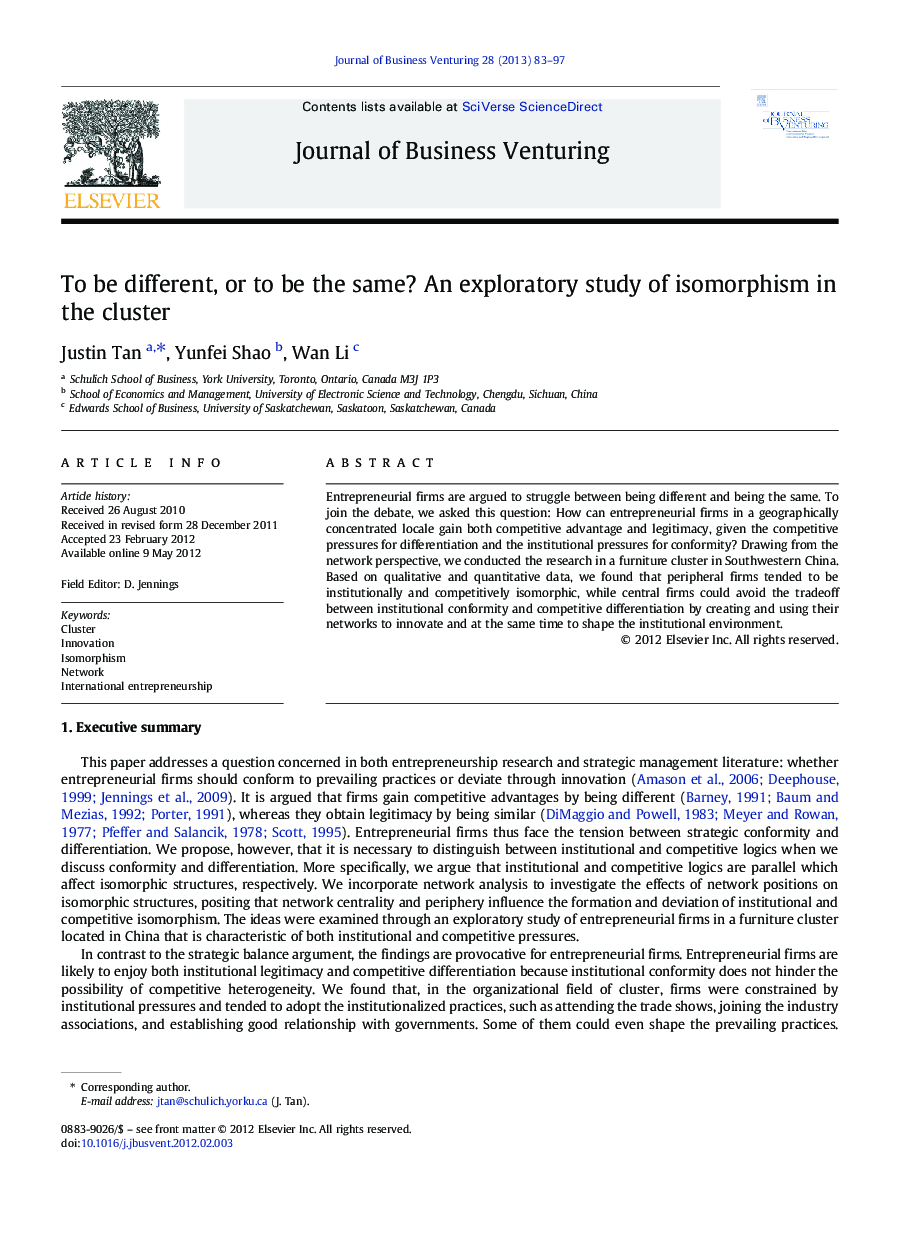| Article ID | Journal | Published Year | Pages | File Type |
|---|---|---|---|---|
| 1019451 | Journal of Business Venturing | 2013 | 15 Pages |
Entrepreneurial firms are argued to struggle between being different and being the same. To join the debate, we asked this question: How can entrepreneurial firms in a geographically concentrated locale gain both competitive advantage and legitimacy, given the competitive pressures for differentiation and the institutional pressures for conformity? Drawing from the network perspective, we conducted the research in a furniture cluster in Southwestern China. Based on qualitative and quantitative data, we found that peripheral firms tended to be institutionally and competitively isomorphic, while central firms could avoid the tradeoff between institutional conformity and competitive differentiation by creating and using their networks to innovate and at the same time to shape the institutional environment.
► Our research is set in Xindu furniture-manufacturing cluster in Southwestern China. ► We used government and industry archive, interviews, and survey data. ► Drawing from the network perspective, the research found: (a) peripheral firms tended to be institutionally and competitively isomorphic; (b) central firms tended to avoid the tradeoff between institutional conformity and competitive differentiation; (c) they did so by creating and using their networks to innovate and at the same time to shape the institutional environment.
